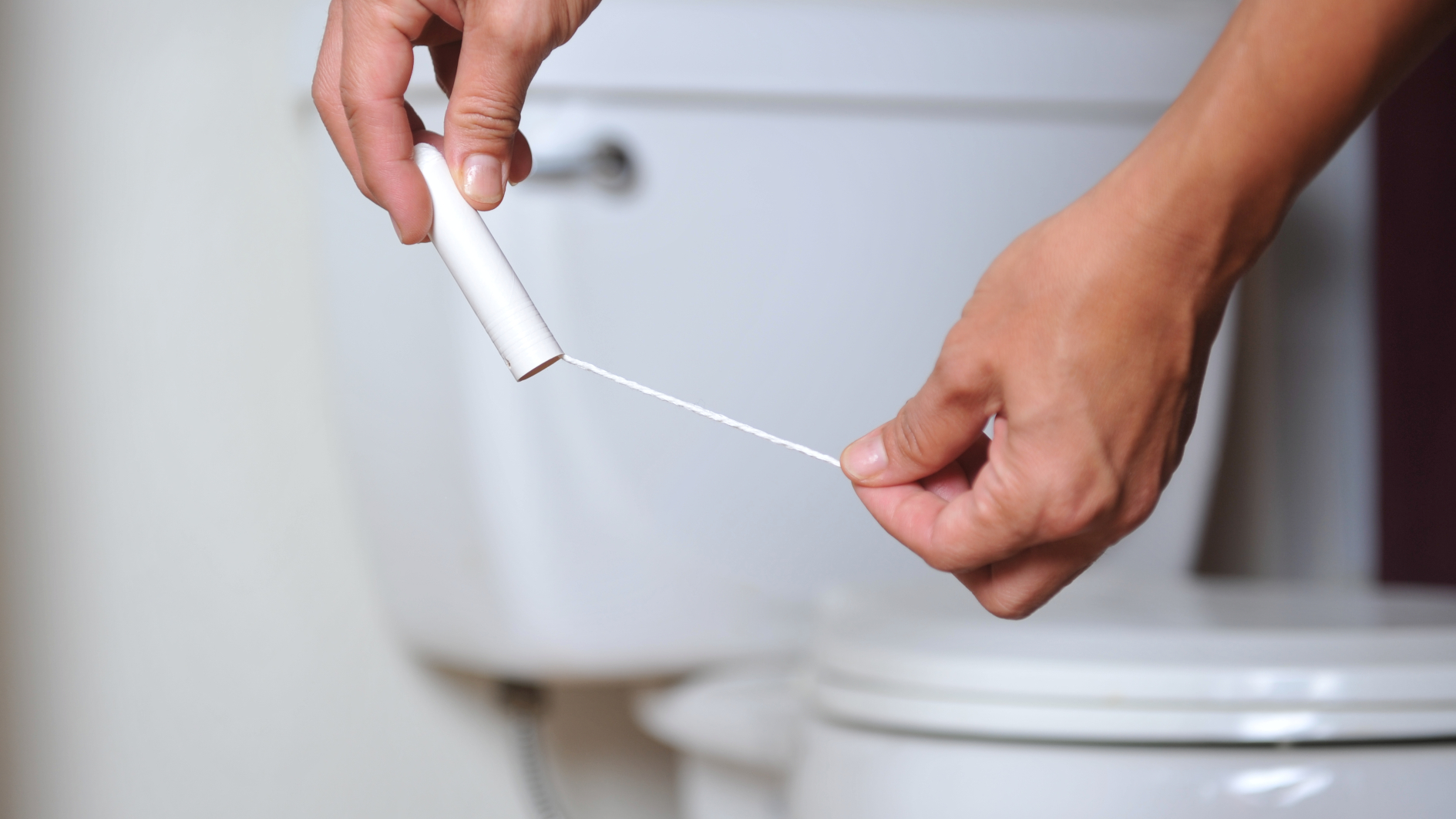Tampons are made of chemical ingredients.
If they’re left unused in your bathroom, they can endanger your health. You should dispose of them thoroughly to prevent them from contaminating the environment.
So, how do you dispose of tampons properly? Tampons are one of the most common hygiene products.
They’re used by millions of women around the world, and several brands have dominated the market for decades. However, it’s important to dispose of tampons properly.
Tampons contain absorbent fibers that absorb menstrual fluid from your body. These fibers are made of plastic and cotton, and should never be flushed down the toilet.
In fact, flushing tampons down the toilet is one of the leading causes of pollution in the US. Furthermore, tampons are toxic when flushed down the toilet and can harm the environment.
So, the best way to dispose of tampons is by putting them in the trash.
Why Should You Not Flush Tampons?
Contents
Although flushing tampons down the toilet is one of the most common ways to dispose of them, it poses a serious threat to the environment.
Many individuals definitely flush their used tampons.
Perhaps they would prefer not to handle used feminine products in a sanitary way.
Tampons, although fluffy, do not break down easily in water.
Toilet paper is designed to break down in water quickly, but discarded sanitary napkins can’t break down in water easily.
Tampons are strong when they enter the water and end up clogging the sewer pipes, which could result in raw sewage overflowing into streets or homes nearby.
If they become stuck, you would have to call for help from a plumbing company to fix your toilet’s plumbing problems, which could cost a lot of money.
How to Dispose of Tampons Properly At Home?
Tampons are often disposed of in toilets or trash cans.
Simply wrap the old tampon in toilet paper before throwing it in the trash to avoid having an unpleasant smell coming from the trash.
You may also wrap the tampon applicator, but make sure it’s empty so it doesn’t cause further problems for the sewer system when you throw it out.
Consider Purchasing a Tampon Trash Can
Perhaps you go through a large volume of disposable pads or feminine products every month.
Perhaps you’d prefer it if there wasn’t any unpleasant odor coming from your trash bin every time you took out the trash.
In such a situation, try to purchase a special trash can for feminine products.
You may acquire a little one if you’re on a budget, or you may opt for a bigger one if you can afford more storage for your hygiene products at home.
Perhaps you have enough cabinet space in the kitchen where you can store the trashcan out of sight from anyone’s view while you use the product.
Tampons may sometimes smell really bad after you’ve used them for a few days, but with proper disposal, you don’t have to worry about smelling like old towels when you use the trashcan again the next day.
If you detect a scent, simply place a couple of dryer sheets in the can before you throw it out the next time to get rid of the unpleasant odor completely.
Why Do We Have to Wrap Tampons in Toilet Paper?
We wrap tampons for two main reasons: first, the absorbent part of the pad tends to absorb odors from the surrounding air when you throw it away in a trash bag, and smells may permeate throughout the bag after some time; second, you want to avoid it.
You may have to smell it while taking out the trash, and that’s the last thing you want to do when getting out of the shower in the morning.
If that’s the case, you may prefer that people don’t see you taking your garbage out at night.
On the other hand, you may wish to dispose of them without wrapping them in toilet paper if you prefer to keep your bathroom clean at all times.
You don’t wish to expose yourself to the foul stench coming from your trash bin each time you take out the trash.
A toilet paper wrapper provides a barrier so the tampons don’t come into contact with other things in your bag, while the plastic wrap from a typical sanitary napkin provides the same purpose too.
Furthermore, if the tampon is especially bloody, a wrapper will help keep your sink from getting stained by the menstrual blood if you discard the used product directly into the sink.
What Happens If There Isn’t a Tampon Receptacle in the Bathroom?
If you don’t notice a receptacle in the bathroom, ask the person in charge to have it installed there as soon as possible so you can keep your restroom neat and clean at all times.
Wrap the used products in toilet paper before putting them in the trash, if you need to. This will keep bad smells from spreading through the whole bag or container.
Tidy up your cubicle, being careful to remove any traces of your menstrual blood, as they’re not only unpleasant to look at but also disgusting to handle.
Throw the tampon in the trash bin after you’ve wrapped up the product in tissue paper and kept it away from any open water sources to prevent the water from spilling out or becoming contaminated by bacteria.
Try not to be wasteful and use the trash can as intended so that you don’t have to deal with unsanitary conditions in your restroom again anytime soon.
You can guarantee the other ladies in your building will follow your example once they see that you’re meticulous about disposing of your menstrual products the right way each time you’re on your period.
How Do You Dispose of Tampons When You’re Not Near a Bathroom?
Maybe you’re camping or hiking in the woods with your buddies and you don’t have access to a sanitary napkin disposal unit or a trash can.
Again, this doesn’t mean you should throw tampons in the bushes. Instead, you should throw them away in the right way so you don’t put yourself at risk of health problems or other problems in the future.
Use a piece of tissue or paper and place it in a plastic zip-lock bag before throwing it in the trash to ensure that it doesn’t contaminate anything else in the environment.
The wrapped tampon should then be disposed of in the regular trash the next time you pass by a public bin.
This method of storage will minimize the risk of anyone coming across your used products and getting sick from them.
It may also be thrown away in an incinerator, depending on the rules in your state, but make sure to dispose of it properly because burning it may not be the safest option for everyone around you.
For further discretion, use Tampon Disposal Bags.
You may purchase disposable tampon bags from your local pharmacy or online.
As previously stated, some women may find it more convenient to carry a box of tissues with them all the time in case they run out of napkins during their periods.
They are also available in a wide range of sizes and designs, so you can pick one that fits your lifestyle and taste preferences perfectly.
They come in little bags that you can easily stash in your bag just in case you run out while you’re out and about and don’t have access to a sanitary napkin disposal unit or a trash can nearby.
The best thing is that they can be easily flushed down the toilet once you’re done with them, so they don’t take up space in your home anymore and you can keep them out of sight from your guests and family.
Depending on your preferences, you may also choose to buy menstrual cups instead of pads and tampons.
You don’t have to worry anymore about running out of napkins during your period because you only have to clean them once and then it’s ready to use again for the next cycle.
Many kinds include tape sealing, so you won’t have to worry about leakages or spills in your bags either, unless, of course, you decide to go swimming while wearing one.
Keep a Paper or Plastic Bag on Hand in Case of an Emergency.
Similarly to how some women have an emergency pack of baby wipes in their purses, it’s also a great idea to keep a small plastic bag on hand in case of emergency as well.
These bags will be useful for disposing of used napkins so that they don’t touch anything else in your home.
You don’t end up spreading bacteria or infections to your family members.
Whether you’re going camping or don’t have easy access to a sanitary napkin disposal unit in your restroom, these bags are perfect to have with you at all times in case you ever need them.
Also Read: How to Dispose of an Ouija Board
Final Words
To summarize, the best and most environmentally friendly approach to dealing with menstruation is to switch to reusable pads and tampons.
Never, ever flush them down the toilet because it causes severe problems for sewer systems and is damaging to our environment in general.
Tampons should not be thrown in landfills because they contain toxins that can leach into the earth’s soil and contaminate ground water in the long run.
Use biodegradable feminine hygiene products, menstrual cups, or compostable sanitary napkins instead of tampons to get rid of them in an eco-friendly way.
Finally, disposable tampon bags are not eco-friendly at all because they pollute the environment and cause serious health issues for people and wildlife living in communities near landfills.





